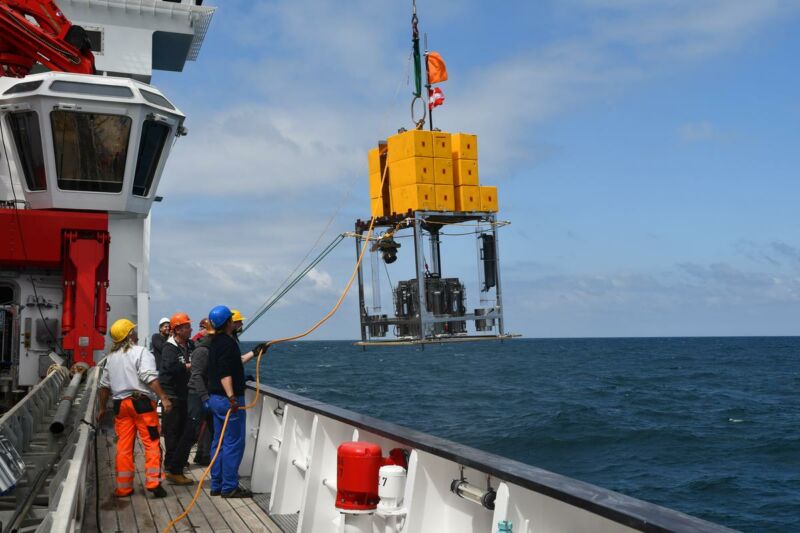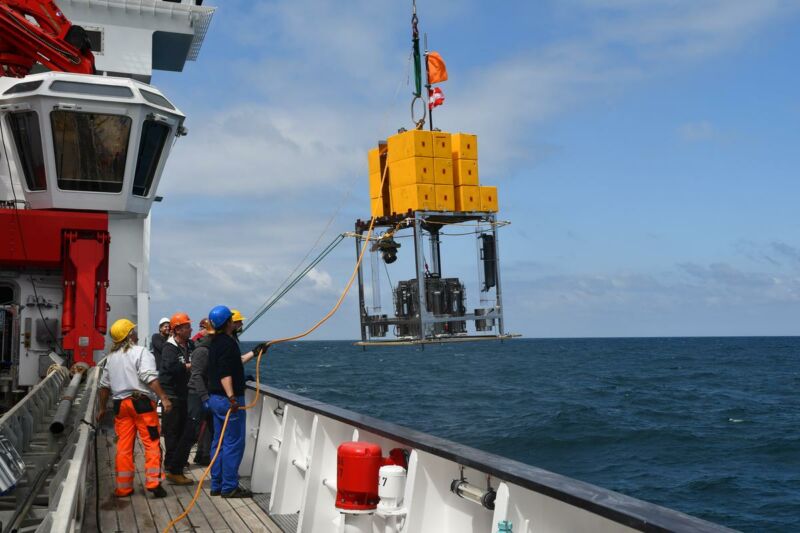
Enlarge / Aboard the German research vessel Sonne off the coast of Chile, ready to take samples from eight kilometers deep in the Atacama Trench system. (credit: Anni Glud, SDU)
Although pollution controls have significantly reduced the mercury content of coal-fired plant emissions, the latest Global Mercury Assessment still estimates that there’s been a 20 percent increase in anthropogenic mercury emissions between 2010 and 2015. A new study provides some insight into where all that mercury might end up: there are unprecedented levels of mercury in up-to-now unmeasured deep-ocean trenches.
The WHO categorizes mercury as one of the top 10 chemicals of major health concern, and as of 2020, over 120 countries have been working together to reduce environmental mercury through the 2017 Minamata Convention on Mercury. In its elemental and mono-methylated form (methylmercury), mercury is a potent neurotoxin. Methylmercury in particular biomagnifies, which means it increases in concentration as it goes up the marine food chain. That has prompted lots of warnings about the consumption of fish and sea food.
This latest report is the first to measure mercury-accumulation rates in sediment cores from some of the deepest parts of the ocean—the hadal zones (>6 km depth). While the deep ocean is considered one of the most important, and relatively safest, places for mercury to end up, the rates of accumulation were up to 56 times greater than prior estimates. The highest measured concentrations were also nearly as high as some of the most contaminated bodies of water on the planet—a jarring finding given that these locations (the Atacama and Kermadec trenches) aren’t in the vicinity of any known mercury sources.




